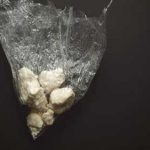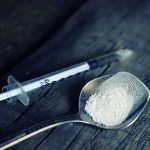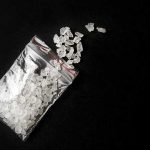Crack cocaine, also known as crack, is made by mixing cocaine powder with water and either ammonia or baking soda. The mixture is heated/cooked, removed from the leftover liquid, and dried, leaving a crystal known as crack cocaine or freebase cocaine.
These crystals or “crack rocks” can be smoked, leading to a rapid high similar to the effects of cocaine. Crack cocaine is a popular illicit drug due to its simple production process and ease in producing large amounts.
Crack cocaine use is a form of illicit substance use. Smoking crack can lead to both legal and personal health repercussions in the long term.
Making Crack From Cocaine
Crack cocaine is a form of cocaine made from cocaine powder. The process is relatively simple and involves ingredients that are easy to obtain.
Cocaine powder, also known as hydrochloride salt, can be dissolved in a mixture of water and either ammonia or sodium bicarbonate (also known as baking soda). The mixture is heated to a boil until a solid substance forms.
Removing and drying the solid substance results in a solid crystal, which can be broken down and sold as crack cocaine. The name “crack” may come from the crackling sound the rocks make as they are smoked.
Risks Of Crack Cocaine Production & Possession
Buying or selling crack cocaine increases the risk of being caught with the drug by law enforcement.
Possession of crack cocaine in the United States has historically led to severe punishments, including a mandatory prison sentence for first-time offenses. The stigma of crack cocaine as a violent, highly addictive drug likely influenced these harsh penalties.
The Fair Sentencing Act of 2010 closed the gap between harsh crack cocaine possession laws and less harsh powder cocaine possession laws. Under the Fair Sentencing Act, the mandatory prison sentence was limited to people who possessed large amounts of the drug, while fines for possession increased.
Effects Of Crack Cocaine
Due to the inexpensive production process, crack cocaine tends to be less expensive than powder cocaine on average. Obtaining large amounts of crack is more feasible than cocaine for some people.
Smoking crack cocaine allows the drug to enter your lungs immediately, where it leads to a short, intense high. Smoking is often done with a glass pipe. Crack cocaine abuse is a form of illicit substance abuse, which comes with a number of physical and mental health risks.
Immediate Effects Of Crack Cocaine
Crack cocaine can cause a rush of extreme energy due to the brief increase of dopamine in the brain. Smoking crack can come with a number of adverse effects, including:
- high blood pressure due to constricted blood vessels
- increased heart rate
- tremors
- bizarre behavior
- increased risk of heart attack
Crack Cocaine Addiction
The effects of crack cocaine tend to last for a shorter time compared to powder cocaine. On average, the effects of crack last around 5 to 10 minutes, while the effects of powder cocaine last around 15 to 30 minutes.
This may encourage repeated drug use of crack since using the drug more often leads to feeling its effects more. Smoking crack in large amounts over a short period of time can be an addictive behavior and a sign of crack addiction.
Forms of crack cocaine addiction include severe cravings, withdrawal symptoms when trying to stop, and long-term physical effects from smoking crack. To access a crack addiction treatment program for yourself or a loved one, contact Northeast Addictions Treatment Center today.
Sources
Written by
Northeast Addition Editorial Team
©2024 Northeast Addition Center | All Rights Reserved
This page does not provide medical advice.





